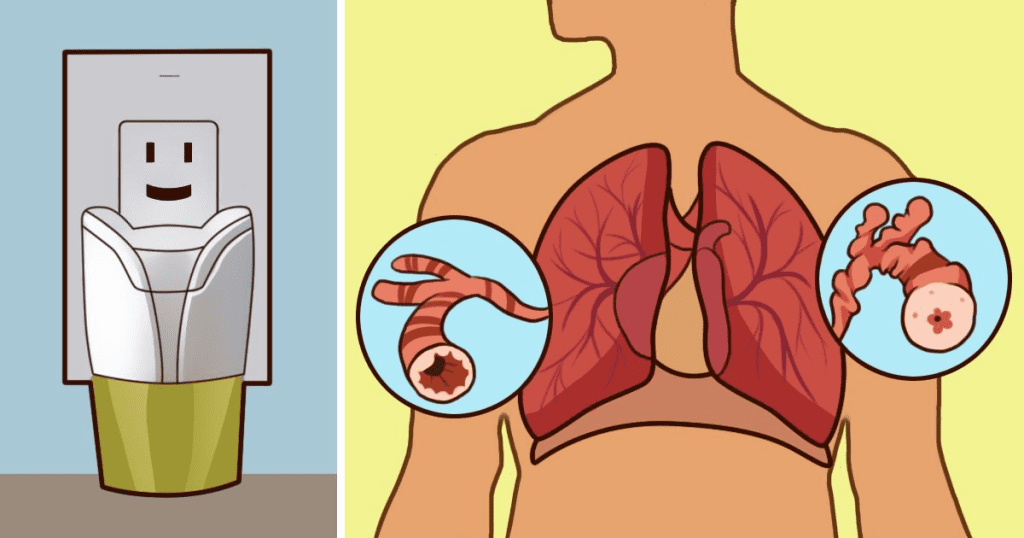Asthma can feel like a constant balancing act, with potential triggers lurking in everyday places. If you’re among the millions worldwide who manage asthma, you know just how sudden and frightening an asthma attack can be. But here’s the good news: by identifying and avoiding your personal triggers, you can minimize your risk of experiencing an attack. In this article, we’ll explore both common and lesser-known asthma triggers so you can breathe a little easier.
Understanding Asthma and Its Triggers

Asthma is a chronic condition that causes the airways to become inflamed, making it difficult for air to flow in and out of the lungs. Asthma attacks occur when certain “triggers” cause the muscles around your airways to tighten, narrowing the passage for airflow. While everyone’s triggers are different, knowing the most common causes can help you avoid them and manage your symptoms more effectively.
Most Common Asthma Triggers
Some triggers are so prevalent they’re almost universal among asthma sufferers. Let’s break down the most common ones you should watch out for.
1. Pets and Animal Dander
Pets bring joy, but they can also introduce allergens that trigger asthma attacks. Animal dander—tiny flakes of skin, fur, and feathers—is a common irritant. According to the American Academy of Allergy, Asthma & Immunology (AAAAI), up to 30% of people with asthma are allergic to household pets. If parting with your pet isn’t an option, try bathing your furry friend weekly and using an air purifier to reduce the amount of dander in the air.
2. Dust Mites: Invisible Yet Pervasive
Dust mites are tiny, insect-like pests that thrive in warm, humid environments. They’re one of the most significant triggers for people with allergic asthma. In fact, up to 90% of people with allergic asthma are sensitive to dust mites. To reduce exposure, vacuum regularly with a HEPA filter, use allergen-proof bedding, and wash your linens in hot water to kill dust mites.
3. Cold Air: A Chill Factor for Your Lungs
Cold air can trigger asthma symptoms by causing the airways to constrict. For some people, stepping outside in chilly weather is enough to bring on an attack. If cold air is a trigger for you, wear a scarf over your nose and mouth to warm the air before it enters your lungs. It’s a simple step that can make a big difference, especially during the colder months.
4. Fragrances and Air Fresheners
While everyone loves a fresh-smelling home, certain fragrances can worsen asthma symptoms. Plug-in air fresheners, candles, and aerosol sprays can contain volatile organic compounds (VOCs) and ozone, which irritate the airways. Instead of using these products, opt for natural scents by simmering herbs and spices, such as cinnamon or cloves, on the stove.
Lesser-Known Asthma Triggers You Shouldn’t Overlook
Some asthma triggers are less obvious but can still have a significant impact on your health. Here are a few you may not have considered.
1. Thunderstorms: Surprising Weather-Related Trigger

Believe it or not, thunderstorms can contribute to asthma attacks. Known as “thunderstorm asthma,” this phenomenon occurs because the storm breaks pollen into smaller particles, which are then carried into the air by wind. When inhaled, these particles can exacerbate asthma symptoms. On stormy days, stay indoors with windows closed to avoid exposure to allergens.
2. Laughing and Crying: Emotional Triggers
It might sound strange, but laughing or crying intensely can trigger asthma symptoms. These activities change your breathing pattern, often causing you to breathe faster or more shallowly, which can lead to airway constriction. If you know that laughter or tears have triggered symptoms in the past, take deep, slow breaths when you feel emotions running high to help steady your breathing.
3. Stress: An Emotional Trigger with Physical Consequences
Stress isn’t just a mental burden—it can take a toll on your body, too. Studies have found that stress is closely linked to asthma symptoms, likely because it prompts the release of hormones that can cause inflammation. Practicing stress management techniques such as meditation, exercise, or breathing exercises can help keep your asthma symptoms in check.
4. Food Additives: Watch Out for Hidden Ingredients

Certain food additives can trigger asthma symptoms in sensitive individuals. Sulfites, which are commonly used to preserve foods, can cause reactions in some people. Sulfites are often found in processed foods, dried fruits, wine, and deli meats. Other additives, such as MSG and yellow food dye, can also aggravate asthma. To avoid these triggers, focus on eating fresh, whole foods whenever possible.
Tips for Managing Asthma Triggers
Now that you’re familiar with common and less obvious triggers, here are some general tips to help you manage them effectively:
- Keep a Journal: Track your asthma symptoms and note any triggers. This information can help you and your healthcare provider develop a tailored management plan.
- Maintain a Clean Environment: Dust and allergens can accumulate in carpets, bedding, and other household items. Regularly clean your home, and consider using allergen-proof covers on your pillows and mattress.
- Practice Good Hygiene: Wash your hands frequently, and avoid touching your face to reduce the risk of respiratory infections, which can trigger asthma attacks.
- Stay Prepared: Always have your rescue inhaler on hand, especially if you know you’ll be exposed to potential triggers.
When to Seek Professional Help

If you’re struggling to identify your asthma triggers or if your symptoms aren’t well-controlled, it may be time to consult with an asthma specialist. A healthcare provider can conduct tests to pinpoint your specific triggers and recommend medications or lifestyle changes to help you manage your condition effectively.
Conclusion: Breathe Easier by Avoiding Triggers
Managing asthma requires vigilance and a proactive approach, but with a little effort, you can identify and avoid many of the triggers that could lead to an attack. By staying informed about common and less-known triggers—like pet dander, dust mites, cold air, stress, and even thunderstorms—you can take meaningful steps to protect your lungs and improve your quality of life. Remember, understanding your personal triggers is the first step to taking control of your asthma and enjoying a healthier, more comfortable life.


